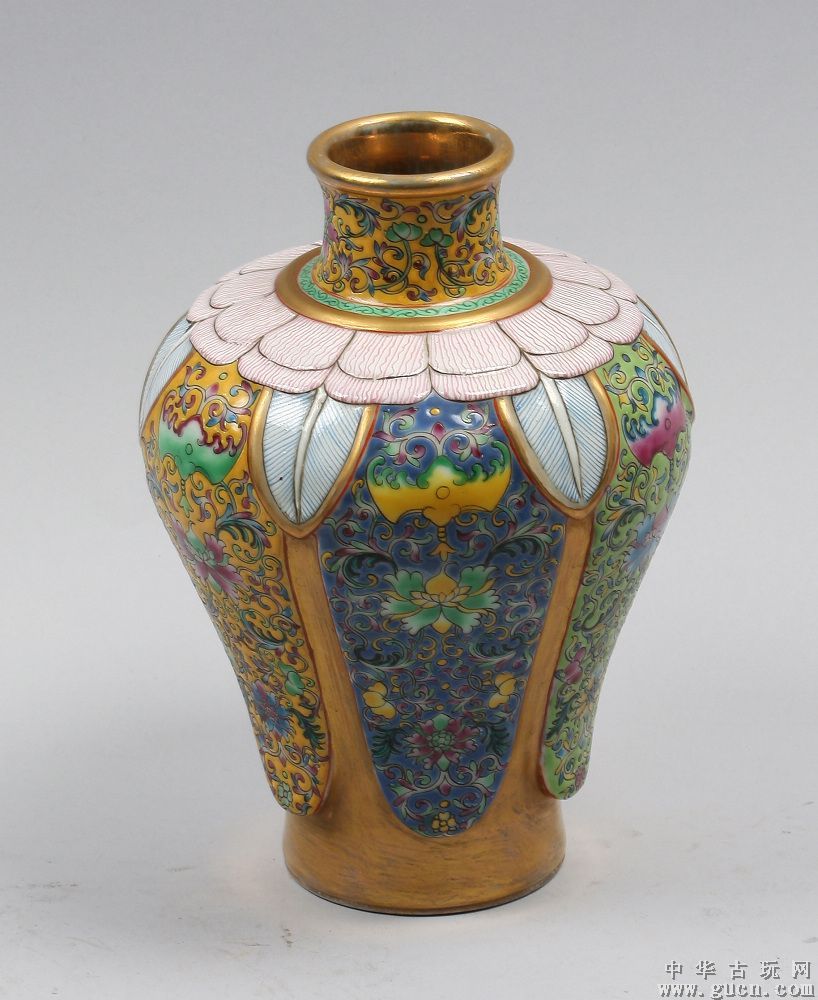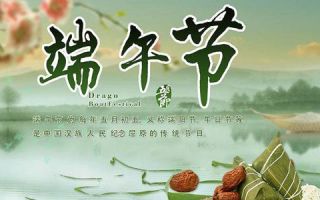我认知中的珐琅彩瓷

谦虚,这两个字不能用在鉴别古代艺术品上面,也不能用作学习态度上面。
因为是懂就是懂,不懂就是不懂。没有考生在做题的时候把能拿95分的题去做成50分的,你都不及格了,还读什么书?你的谦虚表示你无能!无知,或者是忽悠!这样做,不是谦虚。
尤其是当今对古代艺术品鉴别诊断存在很大的审美误区的情况下,不知何解?
总是在互相碾压,互相诋毁,总之市场上的藏品就是指鹿为马。
其实,鉴别艺术品并不难,只要你是坚持实事求是的态度,从日常生活的细节上面去观摩,你手中的所有用过的东西都会留下你日常使用的痕迹,不可磨灭!
特别是珐琅彩瓷器和铜胎珐琅彩,都是有一种油润的感觉,这种油润是可以看到的,可以辨认的,不是虚拟的东西。
但是,偏偏就是: 不管有函头的专家,吃国饭的权威专家,真专家,假专家,又或者民间收藏了几件东西的专家,都在和别人唱反调,只是自己的东西是真的,其他人的东西都是假的,不就是为了那几个钱吗?至于把真的说成假的,假的说成真的吗?这些人是为了几个钱吗?不是的!这些人是在毁灭文化,误导社会,严重违背了做人的良知。是灭我们文化的帮凶和刽子手。
如何识别欣赏清三代珐琅彩瓷。
珐琅彩的着色釉料,书本是这样说的~早期来自于西方,其成分中,有大量硼作为助熔剂使用。而五彩不含硼。同样的,珐琅彩中含有砷。中国传统釉上彩装饰颜料中的五彩,则不含砷。珐琅彩中的黄彩采用氧化锑为着色剂(那不勒斯黄),这是西方使用在油画上的一种颜料,是中国传统釉上彩颜料中所没有的原料。
粉彩中的黄彩,也用氧化锑为着色剂。之后,着色剂铅锡黄中的姜黄色,也用作珐琅彩的着色剂。
珐琅釉料简称珐琅,就是中国人的景泰蓝!这也是景泰蓝早期被叫做珐琅的主要原因,早期的珐琅都是天然形成的矿物质,储量比较少,珐琅的主要原料是铅丹、硼酸盐、玻璃粉等原料化合在经过烧熔而制成的不透明的或是半透明的有独特光泽的物质,(注意有独特光泽)然后在珐琅釉料之中加入不同的金属氧化物,(注意金属氧化物)在烧制时就会变成不同颜色的珐琅,这就是人们常说的珐琅彩。
这是当今大多数藏家和权威认定的珐琅彩通用的鉴定方法。
都是从彩料上去鉴定,这样的鉴定具有很多不确定的因素,因为,我们能看到的是现今的表面现象,两三百年之前又或者更早的釉面,彩面,画面是怎样子的呢?你绝对不知道,甚至想都想不出来,而且彩料的配兌和使用上在实际中会有很大的出入,,何来鉴定?
我们是否都理解了清代的珐琅彩瓷和珐琅彩料的应用呢?有人说珐琅彩在明朝或更早就有!是的这里是掐絲珐琅彩是铜胎的。但是,在瓷胎上用珐琅彩料画画是出现在康熙时候的,至少目前看到的是。
康熙那时还不很熟练,出产的作品还是一般的,要说成熟的珐琅彩瓷还是从雍正时候开始,乾隆皇帝是最成功也是最繁华的。
为什么这样说,因为宫廷里从康熙开始来了洋画家郎世宁。郎世宁几十年为清三代作画,还领了一班洋人,他们的画风是油画功底。
还有一个能做,能悟的唐英,在唐英的管理和带领下,清朝雍正乾隆两父子做出了最好最美的艺术陶瓷,雍正的淡雅不繁琐而美丽。
乾隆的雍容华贵富丽堂皇复杂多变。
他们父子俩的陶瓷画面灵动,写真,表达能力准确,人物会唱会说会笑。花草树木迎风飘舞,动物鸟类逼真。就算是用相机拍照片也就如此。
所以清三代珐琅彩瓷有三个重要的因素: 瓷胎很美而且是最好的胎坭,甚至加入了宝石粉之类的高级材料,所以它的胎特别的好。
珐琅彩料好,珐琅彩料从進口到有國产是一个经历和经过。但是,珐琅彩料都是艳丽无比的,能发出油润之光的,是高质量的,用最贵重的彩料。
胭脂红色的着色元素是黄金,珐琅彩中的胭脂红即使用黄金为着色原料。它是将黄金放在王水中溶解,再用坩埚焙烧形成胶体的金,用其着色便成为胭脂红色,也就是我们所说的金红。这种彩料,在康熙以前没有出现。绿色是以氧化铜为着色剂。如在其中加入锡,可形成色阶。嫩绿色,除含铜锡元素外,还含锑和砷。蓝色,以氧化钴为着色剂。这些化学成分证明,珐琅彩不是中国的传统彩料。有些虽然是传统彩料,但它融入了部分外来元素。
画风好,也就是灵魂所在之處!因为我们看瓷的第一眼,无论你说形也好,画也好,总之你的第一眼就是很美的畫風。
珐琅彩瓷的风格和其他的彩瓷有着天淵的区别。她胎美,工整有韵味就是没画也美。她的珐琅彩料美,鲜艳油润亮丽,其他彩料不可比。画画的人都是皇宫里的高手,尤其是郎世宁的一个班子,他们是油画洋画的高手。雍正后期和乾隆的珐琅彩瓷大多数吸收了郎世宁的西洋油画风格,采用立体效果图,在瓷画的体现是景色是纵深的,人物凸显,或者是深藏画面之中的,这是优秀的珐琅彩瓷的特点。
这个立体效果图,本来是油画上面效果。因为中国人燒造的彩瓷,画面全部是平画的,和中国国画水彩画的风格一样。只有皇宫的珐琅彩瓷採用立体画法。
书本上所有的介绍是珐琅彩凸起画面多少多少。我觉得其实是欣赏不到位,或是見識少无知不懂,也可能不了解历史,也可是手中没有实物,不足为奇!所谓凸起应该理解为景色纵深而令部份凸显。所以珐琅彩瓷的画面是有立体感的,人物表现最好的是洋人,珐琅彩料是鲜艳亮丽油润油亮的,整瓷去看,韵味是美的感受。
把油画的表现形式搬到中国的陶瓷工艺艺术品上就雍正和乾隆的最大创作,为中国的陶瓷艺术走向世界艺术的顶峰!这就是两朝的珐琅彩瓷!
中国明清瓷器为什么能够征服世界,靠的不是古玩地摊上粗制滥造、抹灰抹泥的现代仿制品,而是靠精美高雅、让人叹服的艺术创造和表现 !
有几人看了能不喜欢呢? 做任何事都是一个样子的,做出了完美,做出了极致,做出了超群,做出了特色,做出詩一讓的蘊味,肯定收获会不一样!
一件珐琅彩瓷,如果彩料暗淡无光泽的,一定不是珐琅彩瓷,如果彩料还可以的,但缺乏了主色调的三个色,最多就是洋彩。
珐琅彩瓷一定是色泽鲜艳,亮丽的,如詩如畫,蘊味極高,画風以油画基调为主。这是本人欣賞琺瑯彩瓷心得。
啰啰嗦嗦说了一堆,事实上要欣赏一件艺术品,也没有什么顺序要求,要看明白一个地方都是要反反复复的,前后左右对比才有一点结果,有时候会推翻之前的看法,又要重新开始。
我的目鉴首先从艺术品的表面氧化开始,古瓷一般都氧化了,像人一样会老。一定有不可逆的老化氧化迹象,一目过去,宝光四溢,油润感强烈,漂亮,耐看。它们的釉面都氧化的,釉面泛着淡淡的奶黄,仿品釉面是苍白色的。
美是所有古代陶瓷的核心精华,美是第一要素:
1.器型美,不破不残,工整,古扑有韵味。2.线条美动则象少女,静止象劲松。3.画风美,要有飘逸感,潇洒,笔风苍劲,有力,一笔带出,一目了然,交代清楚。4.彩料美,要干净,清澈,透亮,纯洁,有的还有闪烁感。5.胎骨美,胎底要干净,细腻,如蒸熟的糯米糕,嫩滑,扶摸尤似婴儿的肌肤爽滑的。6.釉面美,釉水美,釉水肥厚,莹润。这样的古陶瓷才应该是真品。
林兆梁谢谢你的阅读。

Modesty, these two words can not be used to identify ancient works of art, can not be used to learn attitude above.
Because to understand is to understand, do not understand is not to understand. There is no examinee who can get 95 points to get 50 points when doing the questions. You have failed. What book do you still read? Your modesty shows that you are incompetent! Ignorance, or deception! This is not modesty.
Especially when there is a big aesthetic misunderstanding in the identification and diagnosis of ancient works of art, what is the solution?
They always crush each other and slander each other. In a word, the collection on the market is just pointing the deer at the horse.
In fact, it is not difficult to identify artworks. As long as you adhere to the attitude of seeking truth from facts and observe from the details of daily life, all the things you have used will leave traces of your daily use, indelible!
In particular, enamel porcelain and copper enamel have a kind of oily feeling, which can be seen and recognized, not virtual things.
However, it's just that no matter the experts who have letters, authoritative experts who eat national food, real experts, fake experts, or experts who have collected some things from the people, they are all in opposition to others. It's just that their own things are real, while others' things are fake. Isn't it for the sake of the money? As for saying the truth is false, is the false true? Are these people for a few dollars? no, it isn't! These people are destroying the culture, misleading the society and seriously violating the conscience of life. They are the accomplices and executioners of our culture.
How to recognize and appreciate the enamel colored porcelain of the three dynasties of Qing Dynasty.
The coloring glaze of enamel, as the book says, came from the West in the early days, and a large amount of boron was used as flux. But multicolor does not contain boron. Similarly, enamel contains arsenic. The five colors in traditional Chinese overglaze decorative pigments do not contain arsenic. Antimony oxide (Naples yellow) is used as colorant in the yellow color of enamel, which is a kind of pigment used in oil painting in the West and a raw material not found in traditional Chinese overglaze pigment.
The yellow color in pastel also uses antimony oxide as colorant. After that, the ginger yellow in the colorant lead tin yellow was also used as a colorant for enamel.
Enamel, enamel for short, is Chinese Cloisonne! This is also the main reason why Cloisonne was called enamel in the early stage. The early enamel was a mineral formed naturally with relatively small reserves. The main raw materials of enamel were lead, borate, glass powder and other raw materials combined in an opaque or translucent material with unique luster made by melting, (pay attention to the unique luster) and then add different metal oxides into the enamel glaze. (pay attention to the metal oxides) when firing, it will become different colors of enamel, which is often called enamel color.
This is the common identification method of enamel recognized by most collectors and authorities.
All of them are identified from the color materials. There are many uncertain factors in such identification, because what we can see is the surface phenomenon of today. What about the glaze, color surface and picture two or three hundred years ago or earlier? You absolutely don't know, or even can't think of it, and there will be a big difference in the mixing and use of color materials in practice, how to identify?
Do we all understand the application of enamel color porcelain and enamel color materials in Qing Dynasty? Some people say that enamel color existed in Ming dynasty or even earlier! Yes, it's made of copper. However, painting with enamel on porcelain body appeared in Kangxi period, at least for now.
Kangxi was not very skilled at that time, and the works produced by him were still ordinary. To say, the mature enamel and colored porcelain started from Yongzheng period, and Emperor Qianlong was the most successful and prosperous one.
Why do you say that? It's because foreign painter Lang shining came to the court from Kangxi. For decades, he painted for the three dynasties of the Qing Dynasty, and led a group of foreigners whose painting style was the foundation of oil painting.
There is another Tang Ying who can do and understand. Under the management and leadership of Tang Ying, the two fathers and sons of Yongzheng and Qianlong in the Qing Dynasty made the best and most beautiful art ceramics. Yongzheng's elegance is not cumbersome and beautiful.
Qianlong's elegant, magnificent, complex and changeable.
Their father and son's ceramic pictures are vivid, realistic and accurate. The characters can sing, speak and laugh. Flowers and trees flutter in the wind, animals and birds are lifelike. Even taking pictures with a camera.
Therefore, there are three important factors in the enamel color porcelain of the three dynasties of the Qing Dynasty: the porcelain body is very beautiful and the best body clay, and even high-grade materials such as gem powder are added, so its body is particularly good.
Enamel color material is good, enamel color material from import to domestic is an experience and process. However, enamel color materials are gorgeous and incomparable, and those that can emit oily light are of high quality, with the most valuable color materials.
The coloring element of carmine is gold, and the carmine in enamel color uses gold as the coloring material. It is gold dissolved in aqua regia, and then roasted in a crucible to form a colloidal gold, with its coloring will become carmine, which is what we call golden red. This kind of color material did not appear before Kangxi. Green is colored with copper oxide. If tin is added, the color scale can be formed. In addition to copper and tin, it also contains antimony and arsenic. Blue with cobalt oxide as colorant. These chemical compositions prove that enamel is not a traditional Chinese color material. Although some of them are traditional color materials, they are integrated with some foreign elements.
Good painting style is where the soul lies! Because the first time we see porcelain, whether you say shape or painting, in short, your first sight is very beautiful painting style.
The style of enamel porcelain is different from other porcelain. She is beautiful, neat and charming, even without painting. Her enamel materials are beautiful, bright and oily, and other materials are incomparable. The painters are all experts in the Imperial Palace, especially a team of Mr. Lang, who are experts in oil painting and foreign painting. In the later period of Yongzheng and Qianlong, most of the enamel porcelain absorbed the western oil painting style of Lang shining, and adopted three-dimensional effect drawing. The embodiment of porcelain painting is that the scenery is deep, the characters are prominent, or hidden in the picture, which is the characteristic of excellent enamel porcelain.
This three-dimensional effect is originally the effect of oil painting. Because the painted porcelain made by Chinese people, the picture is all flat painting, and the style of Chinese watercolor painting is the same. Only the enamel and colored porcelain of the Imperial Palace adopts the three-dimensional drawing method.
All the introduction in the book is how many enamel raised pictures are. In fact, I don't appreciate it well, or I don't know much, or I don't know much about history, but I don't have any real objects in my hand. It's not surprising! The so-called bulge should be understood as the depth of the scenery and make the part prominent. Therefore, the picture of enamel porcelain has a three-dimensional sense, the best performance of the characters is foreigners, and the enamel material is bright and oily. When you look at the whole porcelain, the charm is a feeling of beauty.
It is the greatest creation of Yongzheng and Qianlong to move the expression form of oil painting to China's ceramic arts and crafts, which will lead China's ceramic art to the peak of world art! This is the enamel of the two dynasties!
Why China's Ming and Qing porcelains can conquer the world depends not on the modern imitations of the antiques, but on the exquisite and elegant artistic creation and performance!
How many people like it? Do everything is the same, made perfect, made the extreme, made the superior, made the characteristics, made a poem to let the flavor, certainly the harvest will be different!
A piece of enamel color porcelain, if the color material is dull and lusterless, must not be enamel color porcelain. If the color material is OK, but it lacks the three colors of the main tone, at most it is foreign color.
Enamel porcelain must have bright color, bright, picturesque, high flavor, and the painting style is mainly oil painting. This is my experience in appreciating enamel porcelain.
In fact, to appreciate a work of art, there is no order requirement. To understand a place, we have to go back and forth. Only by comparing the front, back, left and right can we get some results. Sometimes we will overturn the previous view and start again.
My guide starts with the oxidation of the surface of art works. Ancient porcelain is generally oxidized and will age like a person. There must be irreversible signs of aging and oxidation. In the past, Baoguang is overflowing. It has a strong feeling of oil, beautiful and durable. Their glaze is oxidized, the glaze is pale milk yellow, imitation glaze is pale.
Beauty is the core of all ancient ceramics, and beauty is the first element.
1. The shape of the ware is beautiful, not broken, not broken, neat, and ancient style. 2. Beautiful lines, moving like girls, static like Jin Song. 3. The beauty of painting style should be elegant, natural and unrestrained, vigorous and powerful. It should be brought out in one stroke, clear and clear. 4. The color material is beautiful. It should be clean, clear, transparent, pure, and some have a sense of flicker. 5. The fetal bone should be beautiful, and the bottom of the fetus should be clean and delicate, such as steamed glutinous rice cake, tender and smooth, especially like the baby's skin. 6. The glaze surface is beautiful, the glaze water is beautiful, the glaze water is thick and lustrous. Such ancient ceramics should be genuine.
Thank you for reading.












0 条 评 论 Write a Response